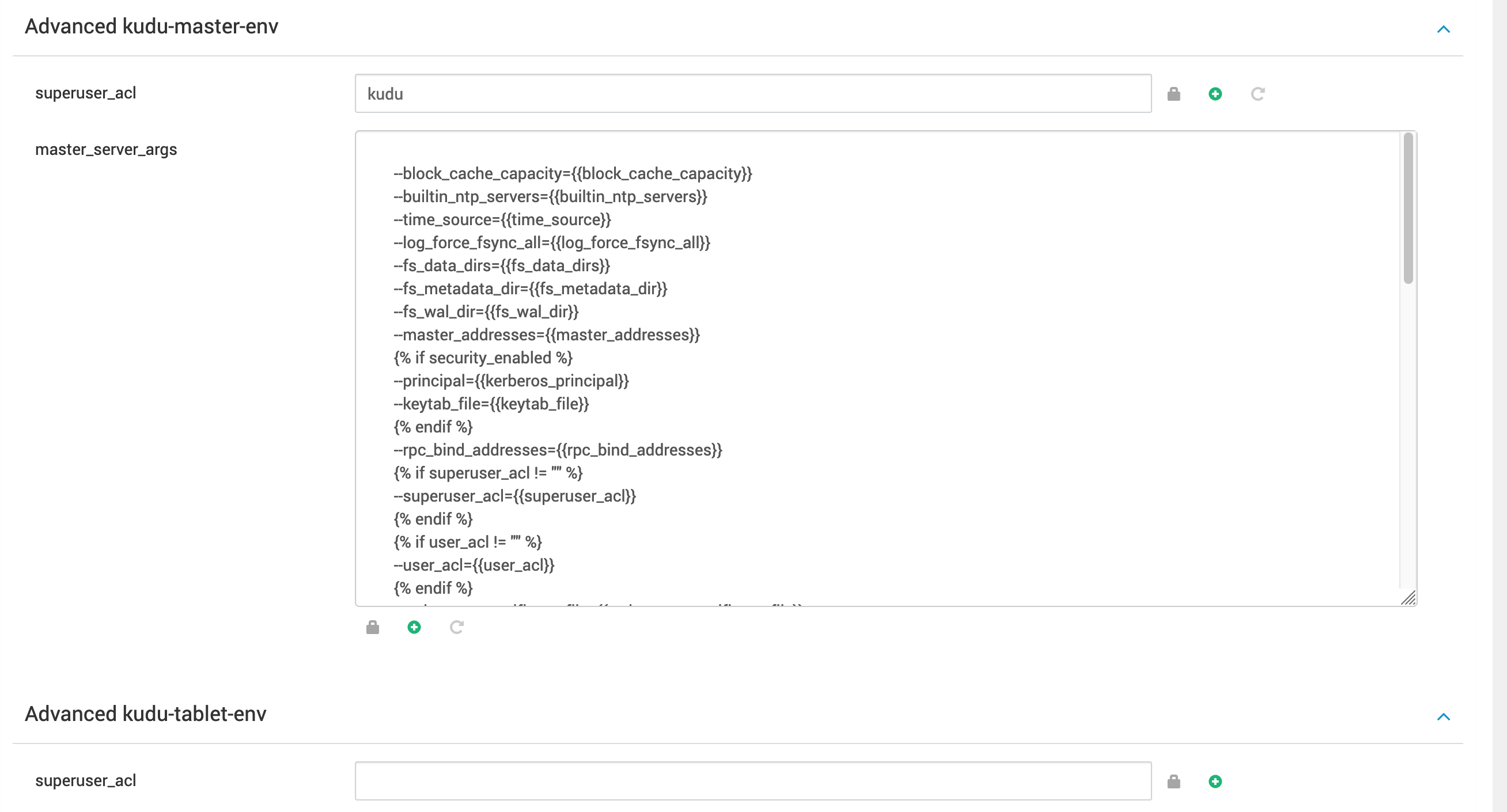This page describes setting Kudu flags, enabling SSL for the web server, and configuring superuser ACLs.
Set Kudu Flags
You can set stable and advanced stable flags from the Ambari UI. However, you cannot set evolving flags from the UI.
To add evolving flags, update the Jinja template in either of the following files:
Advanced kudu-master-envAdvanced kudu-tablet-env
Enable SSL for the Web Server
By default, each Kudu master and tablet server runs a web server that you can access at:
- Master:
http(s)://$IP:8051 - Tablet:
http(s)://$IP:8055
To enable SSL:
Place the SSL key and certificate files in
.pemformat on each machine.In the Ambari UI, in
Advanced kudu-master-envandAdvanced kudu-tablet-env, set the following properties:webserver_certificate_file= /path/to/cert.pemwebserver_private_key_file= /path/to/key.pem
Ensure both files are available on each node that you want to access through the web server.

Configure Superuser ACLs
If you are using Impala with Ranger, you must configure the superuser ACLs:
- Add
impalato the comma-separated list for thesuperuser_aclproperty inkudu-master-env. - Use Impala Ranger (internally Hive) service policies to govern access to Kudu tables.

Was this page helpful?